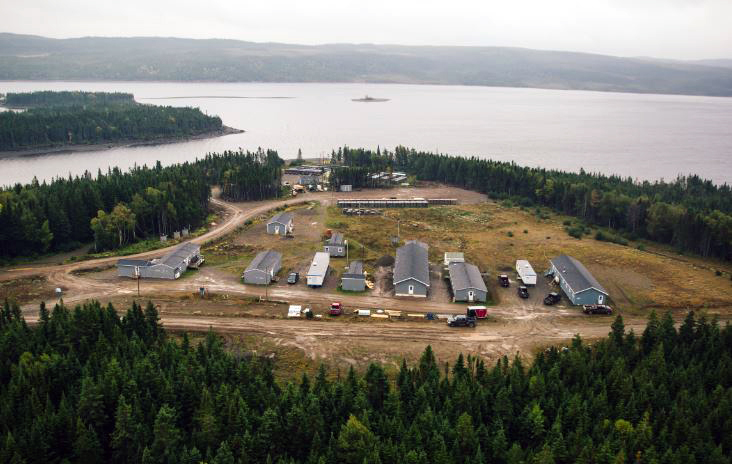Marathon Gold poised to resume drilling at Valentine

Marathon Gold Corp. [MOZ-TSX; MGDPF-OTCQX] on Monday January 18 released additional drill results from recent exploration at the Valentine Gold Project in central Newfoundland.
The results released on Monday represent fire assay data from 14 holes that were located within the new 1.5-kilometre Berry Zone, which is located within the 6-km long Sprite Corridor, which in turn is situated between the project’s Leprechaun and Marathon deposits.
Drilling highlights include 4.67 g/t gold over 34 metres, 5.91 g/t gold over 11 metres, 3.51 g/t gold over 13 metres, 2.53 g/t gold over 16 metres and 35.88 g/t gold over 2.0 metres.
The company also said exploration drilling at the Valentine Gold Project will resume this week following the recent receipt of 2021 exploration permits. A full overview of plans and objectives for the 2021 program will be released shortly, the company said.
Meanwhile, exploration will start where it left off at the Berry Zone, with further infill and delineation over the full 1.5-kilometre-long interval of mineralization outlined from drilling in 2020. “Overall, an exploration program similar in scope to last year is planned, with approximately 50,000 metres of drilling supplemented by surface prospecting,” the company said.
This work will be conducted in parallel with the project’s ongoing engineering and environmental assessment activities, which are based on the 12-year mine plan represented by the existing Marathon and Leprechaun Deposits.
Back in April, 2020, Marathon released a pre-feasibility study (PFS) for the Valentine Gold project. It envisages an open pit mining operation with low initial capital costs and a high rate of return over a 12-year mine life, with average gold production of 175,000 ounces annually in years one to nine from the processing of high-grade mill feed.
In years 10-12, the PFS indicates that processing of low-grade stockpiled material would produce an average of 54,000 ounces per year. The total all-in-sustaining cost is forecast at US$739 an ounce.
The PFS envisages a life-of-mine capital requirement of $545 million, including an initial capital cost of $272 million.
The PFS is based on proven and probable reserves of 1.87 million ounces of gold (41.5 million tonnes at 1.41 g/t gold), as well as a simplified execution strategy based on open pit mining, conventional milling and thickened tailings deposition, with no heap leaching.
